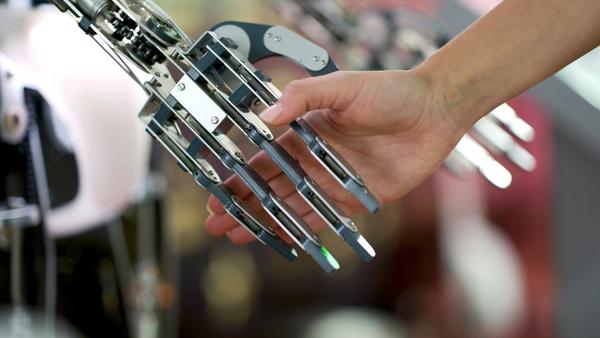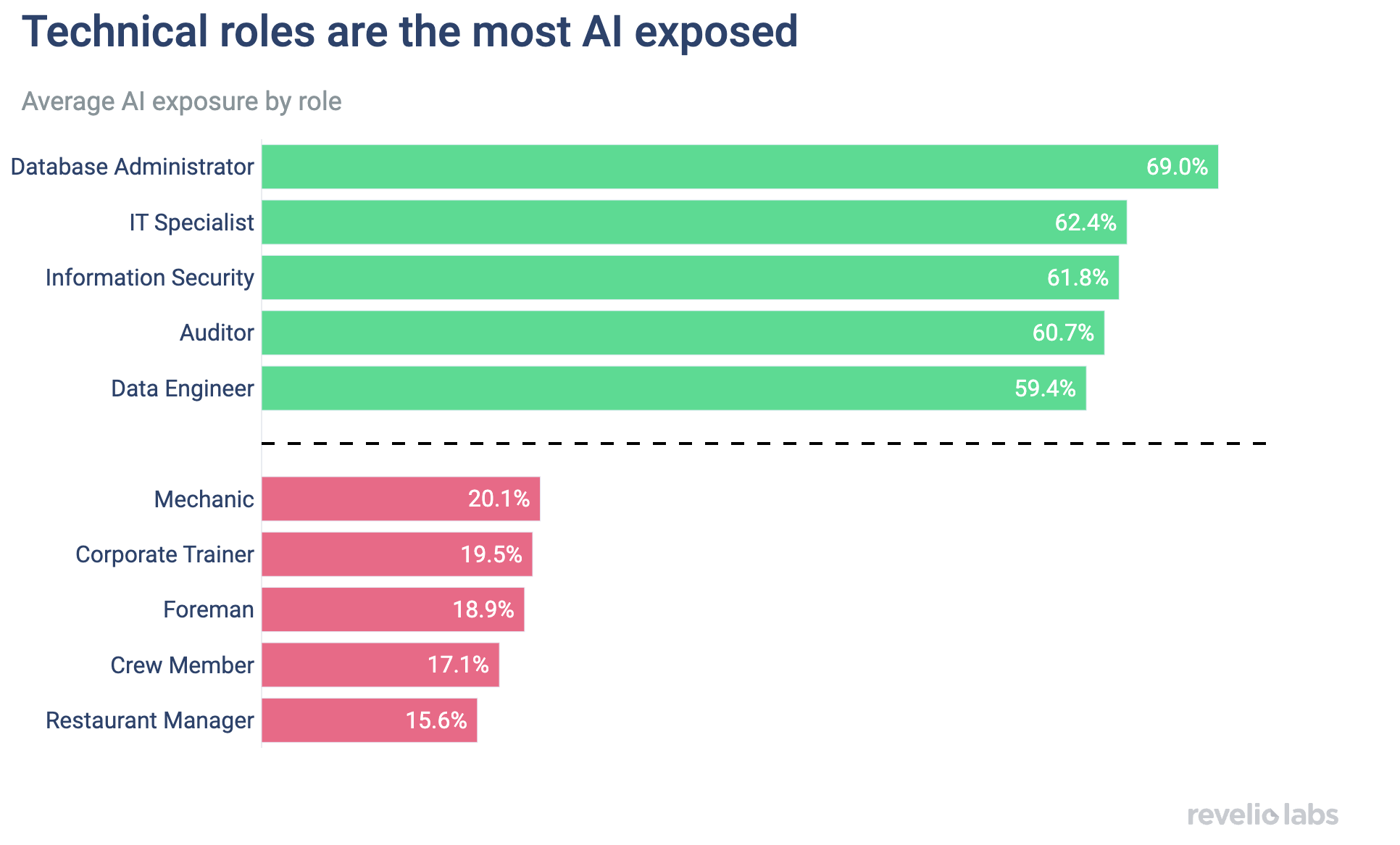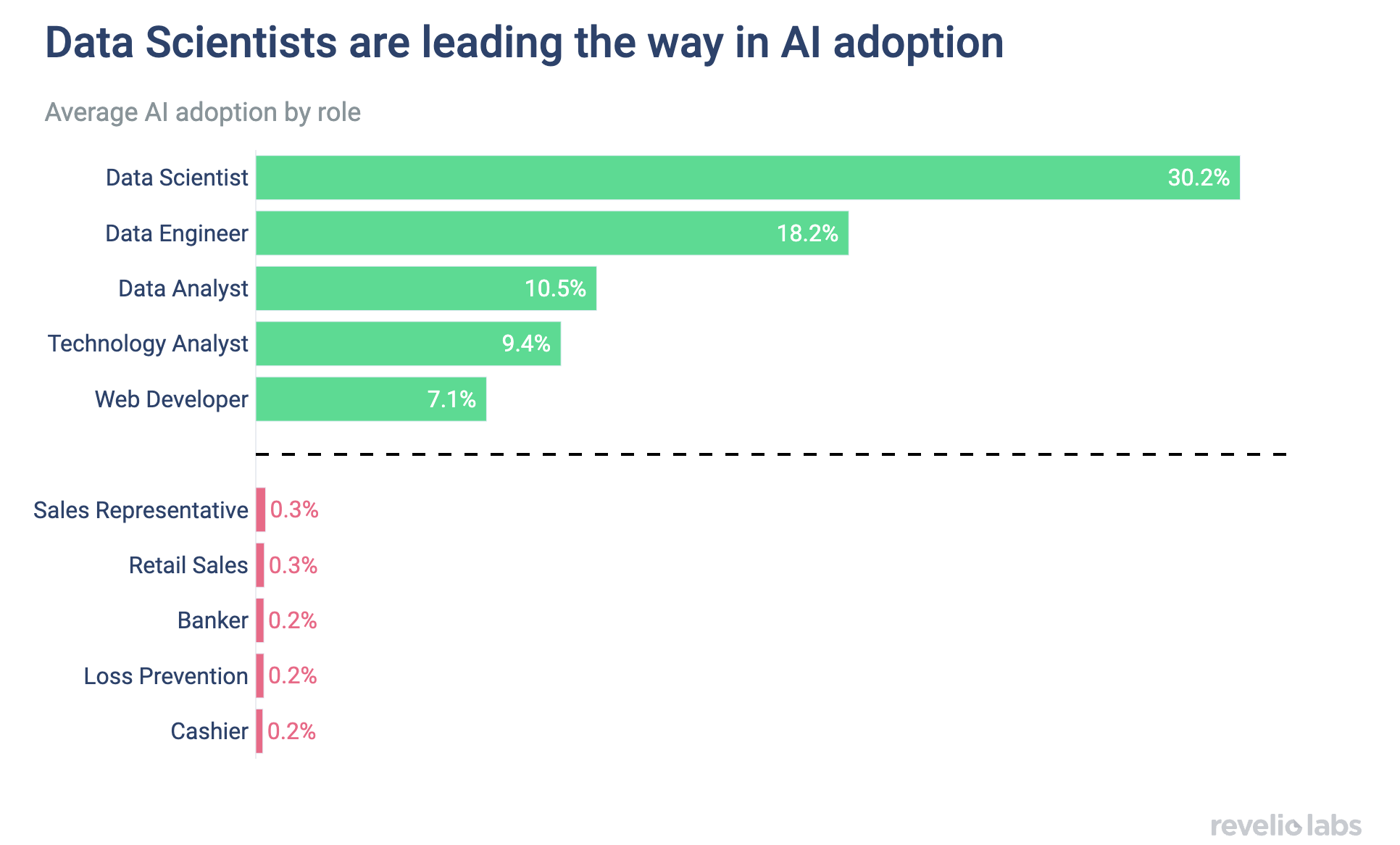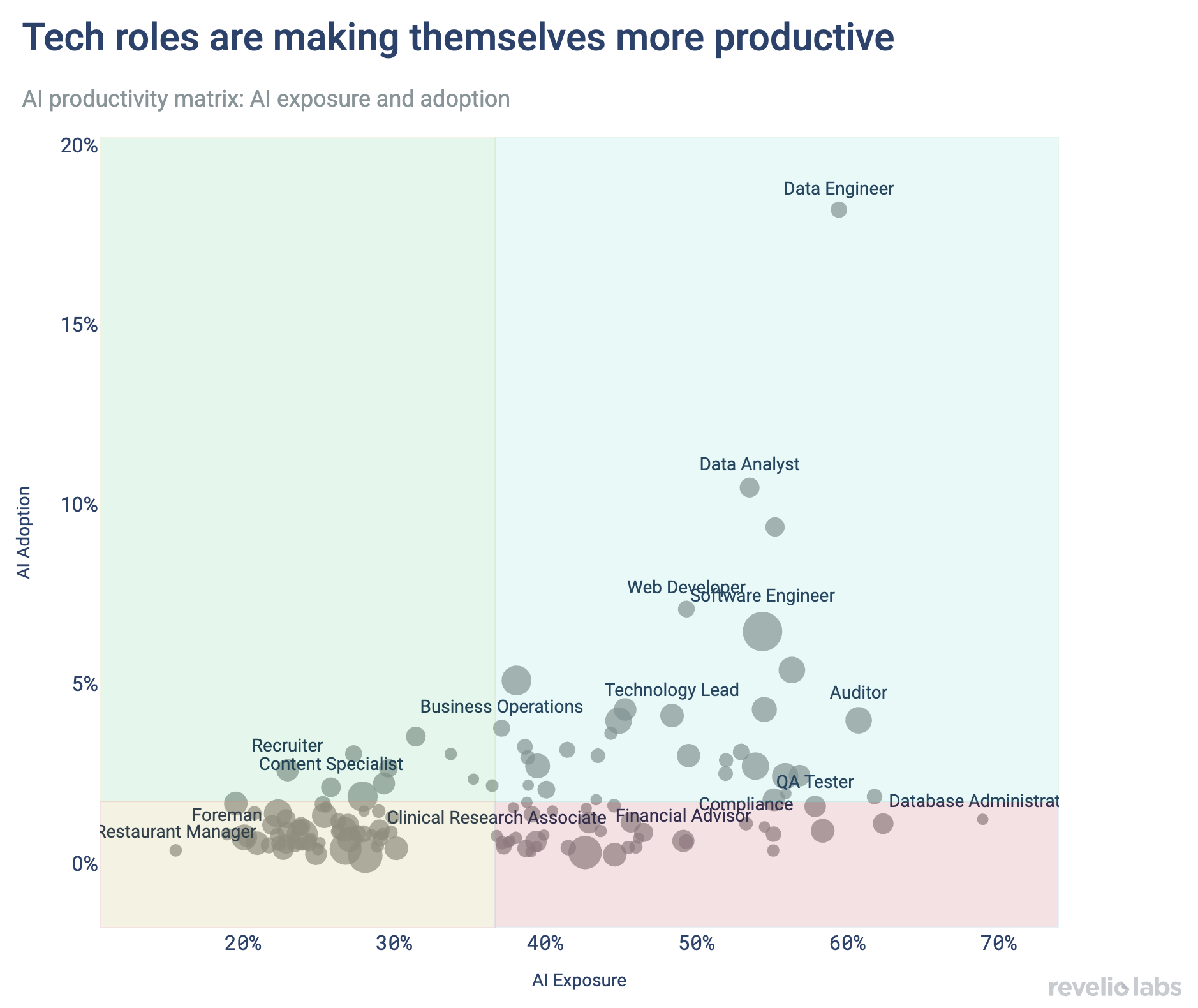AI Isn’t Coming for Your Job—Unless You Ignore It
Lean into productivity and financial gains

According to our new Revelio Labs AI exposure score, which measures the share of work activities that can be performed by or augmented with AI, technical roles like database administrators and information security are the most exposed to AI. Meanwhile, roles in hospitality and manual jobs in manufacturing are the least exposed.
High AI exposure is positively correlated with higher salaries: A ten percentage point increase in AI exposure is associated with 25% higher salaries. Those adopting AI are also being rewarded: Workers within the same jobs who adopt AI earn 8% higher salaries than those who do not.
The higher the AI exposure, the higher the adoption of AI tools. Workers in roles with high adoption and high exposure become more productive. Workers in high exposure roles who are lagging behind in adoption are at a higher risk of displacement through outside automation.
Artificial intelligence is poised to have an outsized effect on the labor market, promising to make many more efficient, automating tedious tasks, while also potentially displacing some workers altogether. Yet, measuring productivity gains from AI remains a challenge, as does attributing the decline in demand for certain roles to either AI or general labor market conditions. Our goal in this newsletter is to understand the potential of AI usage in the workplace and compare it to actual adoption rates of AI.
Jobs are bundles of activities. Using our new Revelio Labs activities taxonomy, we can analyze AI exposure in the labor market systematically: Our taxonomy allows us to classify all activities and tasks extracted from position descriptions in online professional profiles into a standardized set of activities. Then, by classifying all job activities into whether they can be performed using AI, we develop an AI exposure score for every job in our rich HR dataset, which measures the share of activities for each role that can be performed or augmented with AI tools.
We find that technical roles such as database administrators and IT specialists, as well as financial roles like auditors, are the most exposed to AI, as they have the highest share of activities that can be done or augmented by AI. For example, our AI exposure score suggests that 60% of activities of an auditor’s job can be performed or augmented by AI. Meanwhile, roles with the lowest AI exposure scores are those that involve in-person interactions or manual activities, including restaurant managers or foremen.


Given what we know about the capabilities of AI and LLMs, the most AI-exposed occupations may come as no surprise. Two years ago when OpenAI first launched ChatGPT, the discourse was very different: The main focus was on how ChatGPT would impact writing, content creation, and other creative roles. Now it is very clear that AI tools are the most useful to those who code or use data.
Occupations that are most exposed to this wave of technology are very different from occupations that have historically been the most vulnerable to technology. Manual and routine jobs were always the first to be impacted by previous waves of automation, such as computerization or electrification. These tend to be at the lower end of the wage distribution. This time is different: The highest-paying jobs are the most exposed. Our data shows that a ten percentage point increase in AI exposure is associated with 25% higher salaries.


Sign up for our newsletter
Our weekly data driven newsletter provides in-depth analysis of workforce trends and news, delivered straight to your inbox!
AI exposure only gives us a sense of the share of activities that can be replaced or enhanced with AI tools. But have workers actually adopted AI tools in their work activities? We can measure AI adoption by examining whether position descriptions or job descriptions explicitly mention the use of AI tools. Roles with the highest AI adoption (measured as the share of workers using AI tools) coincide with exposure: Tech roles, especially data scientists, are ahead in AI adoption, with as many as 30% of workers currently using AI tools.


Unsurprisingly, AI exposure and AI adoption are positively correlated, with high-exposure jobs also having high adoption rates and vice versa. Our productivity matrix shows AI exposure versus adoption to help understand the potential, as well as the realized gains from AI. Splitting the scatterplot along the median values of AI exposure and adoption, we get four distinct quadrants. Roles in the top right quadrant have high exposure and high adoption rates. Workers in these roles have numerous opportunities to use AI tools in their jobs, as a large share of their daily activities can be augmented with AI, and are also using AI tools to enhance their own productivity. These are roles in which demand may decline over time, because workers are able to do more with fewer people. But the workers in these roles who are adopting AI are definitely among the winners in the race for AI. Roles in the bottom left quadrant need not worry about AI: They have few opportunities to augment their jobs with AI tools, and therefore limited gains from using AI.


Jobs in the green quadrant are ahead of the curve in AI adoption despite having limited productivity gains from doing so. Finally, jobs in the red quadrant are lagging in adoption despite being made up of many activities that can be performed with AI tools. These jobs may be most in danger from outside automation and are most likely to be displaced. Examples of jobs in the red quadrant are legal and customer support roles.
What do high-exposure workers gain from adopting AI in their roles? In other words, when two workers perform similar job tasks in the same occupation, and one adopts AI while the other does not - is there a salary premium? We find that even after controlling for jobs and AI exposure, AI adoption leads to 8% higher salaries on average.
Understanding the rugged AI frontier of what the technology is truly good for can be challenging. This framework of understanding AI exposure at a granular occupational level highlights where AI can make a difference and where it could just be a distraction. However, it is very clear that adequate adoption of AI is highly rewarded - higher pay for potentially less work and higher job security. You don’t want to be the person in a high-exposure job ignoring AI’s potential.


